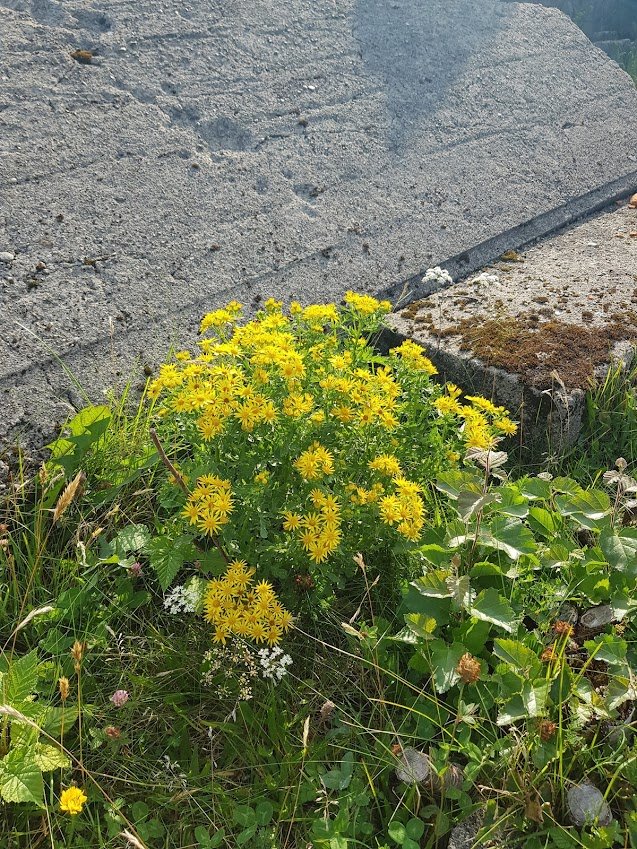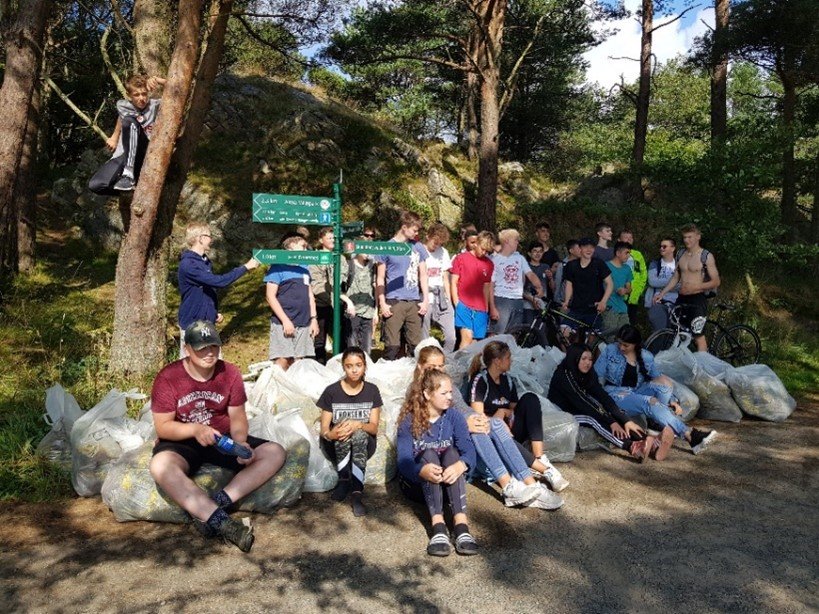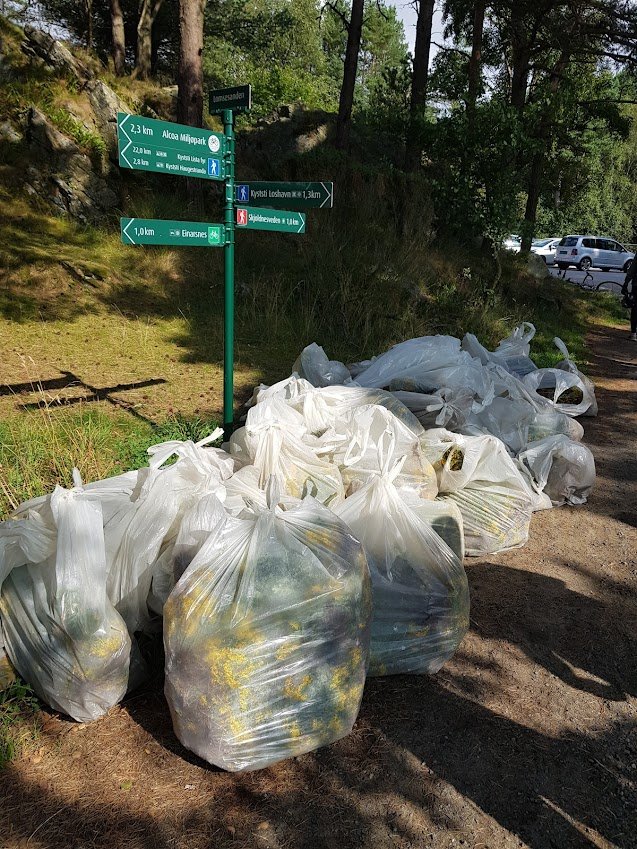Farsund Ungdomsskole, a secondary school in Norway, is a long-term participant in the Alcoa W5 project with great success! Under the banner of “The Ocean Monster”, the aim of the school has been to increase the awareness of issues of plastic waste, especially in the ocean, and to contribute to a clean and biodiverse coastal zone. For several years, students and teachers have used the whole municipality as a classroom and engaged with multiple stakeholders!
One of the school’s many inspiring initiatives is their adoption of a nearby beach. Back in August 2020, the 10th grade pupils lined up at the beach to help the municipality and the county governor remove the invasive species ragwort from the vulnerable habitats on Einarsnes. The day started with an informational session from Nature Manager Stig Alfred Eikeland about alien species that people in the municipality work on removing. Bjørn Vikøyr from the County Governors Department for Climate and the Environment talked about how unique the area Einarsnes is, and why the plants had to be removed.
Einarsnes is part of the protected areas at the Lista beaches. The area has experienced a sudden resurgence of ragwort. This particular plant is toxic to cattle and has the potential to spread quickly. The area is commonly used for hiking and tourism, and seeds could be spread very easily. This will be especially harmful here, not only because of the protected area with many endemic species, but also because of the surrounding agricultural areas.
Cattle farmer Jan Petter Gjertsen was also part of the efforts and was able to tell about the consequences that this plant has for his animals.
“Of course, it is sad to find animals that become seriously ill or at worst die due to the fact that they have eaten the plant, but this also has a very unfortunate economic consequence if the plant establishes itself. The plant does not bloom until autumn. Therefore, one can include the plant in the ensilage. Grass is collected first time in May or June, and farmers cannot detect the toxic plants until the flowers appear early in the autumn, around August or September. If farmers suspect that ragwort is included in the ensilage, large values must be condemned. If I have to buy ensilage from others, this means that a monthly salary or two quickly disappears.”
The pupils and teachers were blessed with wonderful weather and a lovely view. They worked on removing the plant for many hours but enjoyed each other’s company and a good lunch outdoors. “It feels important”, many of the pupils stated. Another pupil said that this was much more interesting than regular school, because he was actually saving animals.
The farmer and representation from the municipality and county governor were impressed by the energy that the students showed in the work of removing the plant.
"It was a great experience to see how quickly Einarsnes was emptied of the mob plant when the young people started working!"
The hope is that students bring home the lessons they have learnt and remove the weed from around their houses as well.
Farsund Ungdomsskole has been awarded a Green Flag for their work on preserving species diversity. They continue keeping the beach clean from marine waste, removing weed-plants such as ragwort and broom, and planting and taking care of the vulnerable plant seaholly at this same area.
The W5 project has created many opportunities for learning and skills development. Students have learnt about the importance of ecosystems, the issue of litter and waste, how to take positive action, communication, collaboration and negotiation (e.g. with politicians, shops, volunteers, scientists, and divers) to solve the problem of plastic waste, and taking ownership of the solutions.
The school is also very active in communicating about their environmental efforts and has been featured in the news of the Norwegian State TV-channel, a local news report, and the local newspaper, to name a few.
The Alcoa W5 project activities at Farsund Ungdomsskole support the following SDGs:






